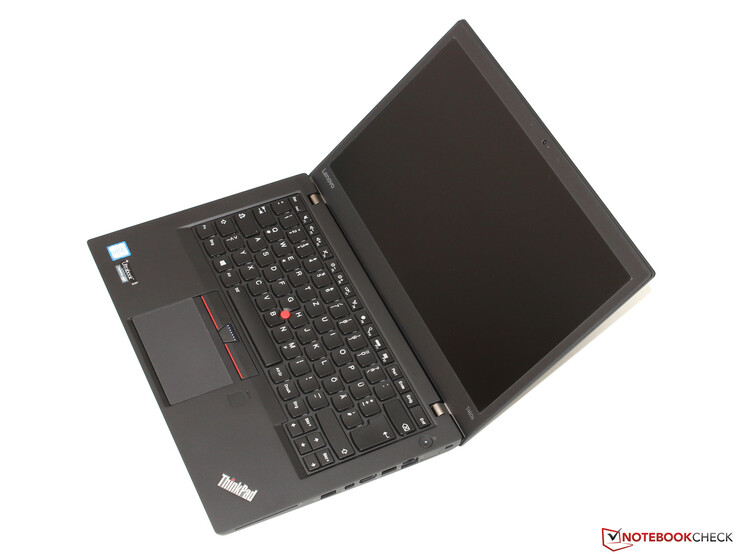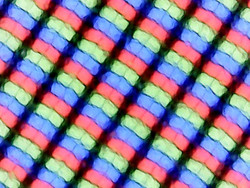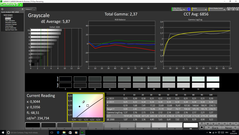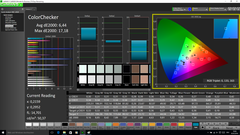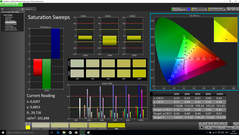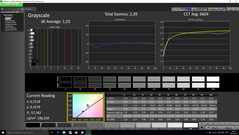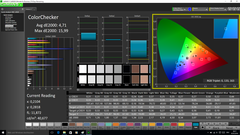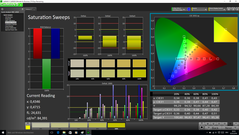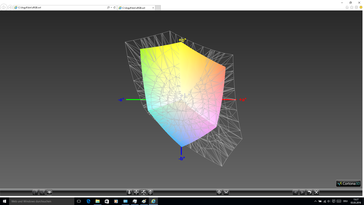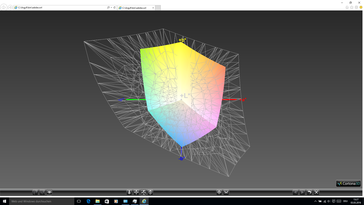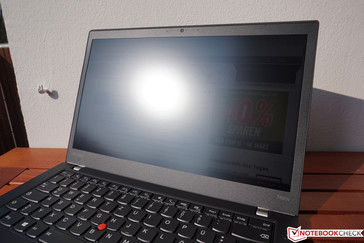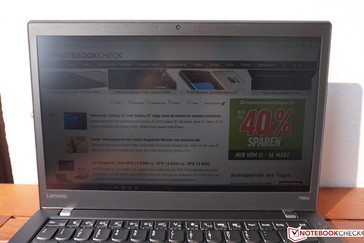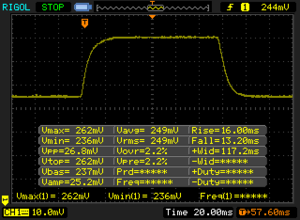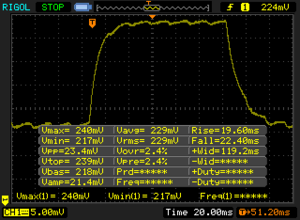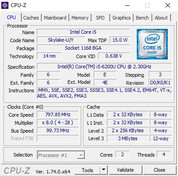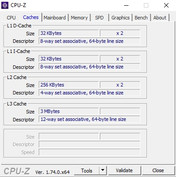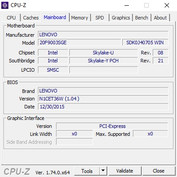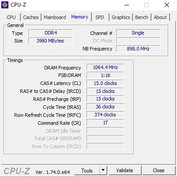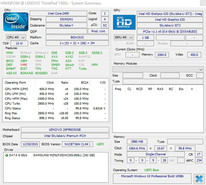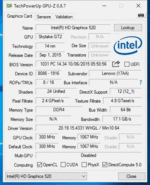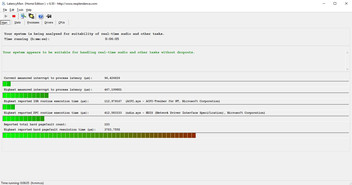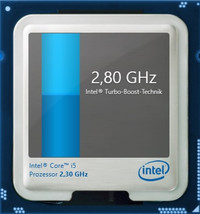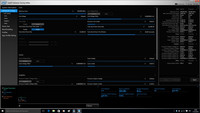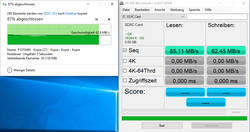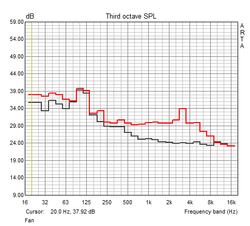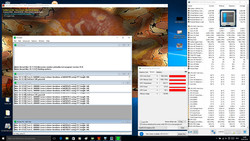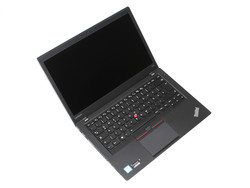Lenovo ThinkPad T460s (Core i5, Full HD) Ultrabook Review
For the original German review, see here.
The ThinkPad T460s left a great impression in our recent review and is already one of the best office notebooks in 2016. However, the high-end configuration is also expensive at around 2,350 Euros (~$2669). Today we review the base model with the designation 20F9003SGE for around 1,400 Euros (~$1590) and check if there are any compromises you will have to make. The education model of our review configuration is around 200 Euros (~$227) less expensive.
The first thing you will notice on the spec sheet is the small amount of RAM (4 GB), but the configuration is otherwise pretty powerful. Besides the Core i5 processor (ULV), Lenovo also equips the T460s with a 192 GB SSD as well as a matte Full HD IPS display.
Our two review units of the ThinkPad T460s use the same chassis, so we will not cover the sections Case, Connectivity, Input Devices and Speakers in this review update. The relevant information is available in the review of the T460s 20FA003GEE. Some pictures were taken from this article as well.
Overview about configurations (without education discount, excerpt):
| ThinkPad T460s (20F9003SGE) | ThinkPad T460s (20F90042GE) | ThinkPad T460s (20FA003GGE) |
|---|---|---|
| Core i5-6200U | Core i5-6200U | Core i7-6600U |
| 4 GB DDR4-RAM | 8 GB DDR4-RAM | 12 GB DDR4-RAM |
| 192 GB (SSD, SATA) | 256 GB (SSD, SATA) | 512 GB (SSD, PCIe) |
| HD Graphics 520 | HD Graphics 520 | HD Graphics 520 |
| 1920 x 1080 pixels, IPS panel | 1920 x 1080 pixels, IPS panel | 2560 x 1440 pixels, IPS panel |
| no WWAN | UMTS/LTE | UMTS/LTE |
| starting at 1400 Euros | starting at 1700 Euros | starting at 2350 Euros |
Display
Lenovo only equips the ThinkPad T460s with IPS displays. The Full HD resolution (1920x1080 pixels) results in a decent pixel density of 157 PPI in combination with the 14-inch screen. The advantage of this resolution is that you can also use it without scaling. Similar to previous models, Lenovo uses panels from different manufacturers, so you cannot avoid a certain panel lottery. Our panel has the designation N140HCE-EAA (LEN40A9) and is provided by Innolux. The alternative is a Full HD panel from LG.
Lenovo advertises a luminance of 250 cd/m² as well as a contrast ratio of 700:1. The display even manages a better contrast ratio of more than 1,000:1 thanks to the very low black value (0.22 cd/m²), but this is unfortunately all the good news. The maximum brightness is only 226 cd/m² and just 211 cd/m² on average (brightness distribution: 89%). This is clearly below the advertised value. We can unfortunately not say how the LG display performs in this respect. If you want a brighter panel, you should get the WQHD version to be on the safe side.
The dark panel is even more annoying since the panel leaves a decent subjective impression and is clearly sufficient for typical office tasks. Backlight bleeding was no problem for our review unit, just like PWM. While usable, we would have liked a more powerful background illumination in bright rooms.
| |||||||||||||||||||||||||
Brightness Distribution: 89 %
Center on Battery: 222 cd/m²
Contrast: 1027:1 (Black: 0.22 cd/m²)
ΔE ColorChecker Calman: 6.44 | ∀{0.5-29.43 Ø4.78}
ΔE Greyscale Calman: 5.87 | ∀{0.09-98 Ø5}
61.15% sRGB (Argyll 1.6.3 3D)
39.58% AdobeRGB 1998 (Argyll 1.6.3 3D)
43.14% AdobeRGB 1998 (Argyll 3D)
61.6% sRGB (Argyll 3D)
41.65% Display P3 (Argyll 3D)
Gamma: 2.37
CCT: 6856 K
| Lenovo ThinkPad T460s-20F9003SGE 1920x1080, IPS | Lenovo ThinkPad T460s-20FA003GGE 2560x1440, IPS-Panel | Lenovo ThinkPad T450s-20BWS1UT00 1920x1080, IPS-Panel | HP EliteBook 840 G3 T9X59ET#ABD 1920x1080, TN LED | Dell Latitude 14 7000 Series E7470 2560x1440, IPS | |
|---|---|---|---|---|---|
| Display | 62% | 45% | 18% | 59% | |
| Display P3 Coverage (%) | 41.65 | 68.7 65% | 64.8 56% | 48.93 17% | 67.2 61% |
| sRGB Coverage (%) | 61.6 | 98.1 59% | 83.8 36% | 73.7 20% | 95.9 56% |
| AdobeRGB 1998 Coverage (%) | 43.14 | 70.4 63% | 61.2 42% | 50.5 17% | 69.3 61% |
| Response Times | 8% | 6% | -3% | ||
| Response Time Grey 50% / Grey 80% * (ms) | 42 ? | 35.6 ? 15% | 43 ? -2% | 48 ? -14% | |
| Response Time Black / White * (ms) | 29.2 ? | 29.2 ? -0% | 25 ? 14% | 27 ? 8% | |
| PWM Frequency (Hz) | 220 ? | 204 ? | |||
| Screen | 20% | 18% | -26% | 40% | |
| Brightness middle (cd/m²) | 226 | 257 14% | 288 27% | 366 62% | 380 68% |
| Brightness (cd/m²) | 211 | 248 18% | 281 33% | 336 59% | 354 68% |
| Brightness Distribution (%) | 89 | 94 6% | 94 6% | 87 -2% | 81 -9% |
| Black Level * (cd/m²) | 0.22 | 0.26 -18% | 0.286 -30% | 0.65 -195% | 0.26 -18% |
| Contrast (:1) | 1027 | 988 -4% | 1007 -2% | 563 -45% | 1462 42% |
| Colorchecker dE 2000 * | 6.44 | 4.59 29% | 4.35 32% | 10.26 -59% | 3.11 52% |
| Colorchecker dE 2000 max. * | 17.18 | 9.72 43% | 6.73 61% | ||
| Greyscale dE 2000 * | 5.87 | 6.38 -9% | 3.7 37% | 11.51 -96% | 4.35 26% |
| Gamma | 2.37 93% | 2.51 88% | 2.68 82% | 2.4 92% | 2.37 93% |
| CCT | 6856 95% | 6238 104% | 6076 107% | 12725 51% | 6771 96% |
| Color Space (Percent of AdobeRGB 1998) (%) | 39.58 | 65 64% | 54.7 38% | 47 19% | 62 57% |
| Color Space (Percent of sRGB) (%) | 61.15 | 98 60% | 74 21% | 96 57% | |
| Total Average (Program / Settings) | 30% /
27% | 32% /
25% | -1% /
-12% | 32% /
38% |
* ... smaller is better
We can measure average DeltaE-2000 deviations of 6.44 (colors) and 5.87 (grayscale) compared to the sRGB reference color space ex-works, so the Full HD version is on the average level of the more expensive WQHD model. While the higher-resolution screen performs much better after a calibration, we can only see limited improvements for our Full HD model. The grayscale benefits the most with a DeltaE-2000 value of 1.03, which is very good. The average deviation of the colors is better at 4.71 as well, but there are still extreme outliers for blue colors in particular (up to 16). Our Full HD panel is also clearly beaten by the WQHD model in respect of the color space coverage. We can only determine 61% for the sRGB and about 40% for the wider AdobeRGB standard. This means the Full HD panel is not suited for professional picture editing.
We have already said that the panel is sufficient for typical office tasks, especially if you plan to use it in combination with external monitors. It is interesting that the WQHD panel is currently available for no additional charge when you configure the device in Lenovo's online shop. The only disadvantage of the WQHD panel is the PWM flickering; the power consumption on the other hand – as we will see later – is just slightly higher. It is better than the Full HD panel in all the other disciplines though.
The ThinkPad T460s obviously benefits from the matte display surface outdoors, and the limiting factor will be the luminance. You can use the device even in brighter environments as long as you can avoid direct sunlight since the brightness is not reduced on battery power. However, it is not very comfortable and is tiring for the eyes after a short while. There are no problems in the shade.
Display Response Times
| ↔ Response Time Black to White | ||
|---|---|---|
| 29.2 ms ... rise ↗ and fall ↘ combined | ↗ 16 ms rise | |
| ↘ 13.2 ms fall | ||
| The screen shows relatively slow response rates in our tests and may be too slow for gamers. In comparison, all tested devices range from 0.1 (minimum) to 240 (maximum) ms. » 77 % of all devices are better. This means that the measured response time is worse than the average of all tested devices (20.2 ms). | ||
| ↔ Response Time 50% Grey to 80% Grey | ||
| 42 ms ... rise ↗ and fall ↘ combined | ↗ 19.6 ms rise | |
| ↘ 22.4 ms fall | ||
| The screen shows slow response rates in our tests and will be unsatisfactory for gamers. In comparison, all tested devices range from 0.165 (minimum) to 636 (maximum) ms. » 66 % of all devices are better. This means that the measured response time is worse than the average of all tested devices (31.6 ms). | ||
Screen Flickering / PWM (Pulse-Width Modulation)
| Screen flickering / PWM not detected | ||
In comparison: 53 % of all tested devices do not use PWM to dim the display. If PWM was detected, an average of 8111 (minimum: 5 - maximum: 343500) Hz was measured. | ||
The viewing angle stability of the IPS display is very good. You can still see the content even from very wide angles. There will only be visible color distortions from an angle from above, but this should not be a big deal in practice. It is no problem to a look at the panel with multiple persons.
Performance
Our review unit of the ThinkPad T460s (20F9003SGE) is the base model, but you do not have to worry about a sluggish system. The Intel Core i5 offers sufficient performance for many office and multimedia applications, and the SSD ensures a responsive system. Only the memory equipment is meager at 4 GB (DDR4, soldered, single-channel). There is, however, one free slot, so you can solve the problem rather easily and inexpensively.
Processor
The Core i5-6200U is basically the bread-and-butter CPU from Intel and is used in many Ultrabooks. The ULV chip supports Hyperthreading and (usually) has a TDP of 15 watts. Similar to the more powerful T460s with the Core i7-6600U, however, the TDP was permanently raised to 25 watts, which is an advantage when you stress both the CPU and GPU in particular. The processor itself does not benefit from the higher TDP though because the i5-6200U only consumes up to ~13 watts anyway due to the comparatively low clock (up to 2.8 GHz for one core and 2.7 GHz for two cores). The processor performance is not reduced on battery power.
The benchmark results are therefore on the expected level for the 6200U. It is interesting that the faster Core i7-6600U from the high-end T460s manages an advantage between 20 and 22% depending on the test. If you plan to use your laptop for demanding tasks, an upgrade to the faster processor could actually pay off. More benchmarks with the Core i5-6200U are available in our Tech section.
System Performance
Thanks to the SSD, the subjective performance impression is very good. The system is responsive as expected, and there are usually no delays when you use the device. However, the small amount of memory can quickly become the bottleneck during multitasking. This is also noticeable in PCMark 8, where our review unit finishes last or second to last place within the comparison. The results are still good in general, and you can easily increase the performance with an additional memory module.
| PCMark 8 Home Score Accelerated v2 | 3024 points | |
| PCMark 8 Creative Score Accelerated v2 | 3644 points | |
| PCMark 8 Work Score Accelerated v2 | 4121 points | |
Help | ||
Storage Devices
Our review unit is equipped with an M.2-SSD from Samsung, which is attached via a SATA-III interface. It is the "slowest" SSD you can get for the T460s. There are also SSDs with OPAL encryption or extremely fast NVMe-SSDs as options. The model CM871 from Samsung has a capacity of 192 GB and leaves mixed impressions in the benchmarks. Up to 450 MB/s for sequential reads are good, but the write performance in particular is pretty bad. The read performance of small files (4K Read) is also low at just 14 MB/s. Still, the SSD is obviously much better than a conventional hard drive. More comparisons are available in our SSD/HDD list.
It is not surprising that the card reader performance is on par with the more expensive version of the T460s: 85 MB/s seq. read, 62 MB/s seq. write and 62 MB/s when we copy pictures (~5MB each) – average results.
| Lenovo ThinkPad T460s-20F9003SGE Intel Core i5-6200U, Samsung CM871 MZ7LF192HCGS | Lenovo ThinkPad T460s-20FA003GGE Intel Core i7-6600U, Samsung SSD SM951a 512GB M.2 PCIe 3.0 x4 NVMe (MZVKV512) | Lenovo ThinkPad T450s-20BWS1UT00 Intel Core i5-5200U, Samsung SSD PM871 MZ7LN256HCHP | Lenovo ThinkPad T450s-20BWS03F00 Intel Core i7-5600U, Intel SSD Pro 2500 Series SSDSC2BF360A5L | Dell Latitude 14 7000 Series E7470 Intel Core i7-6600U, Samsung SSD PM851 M.2 2280 256GB | |
|---|---|---|---|---|---|
| AS SSD | 614% | 241% | 63% | 179% | |
| Seq Read (MB/s) | 471 | 2039 333% | 503 7% | 489.6 4% | 495.5 5% |
| Seq Write (MB/s) | 163.3 | 1407 762% | 285.2 75% | 264.5 62% | 283.7 74% |
| 4K Read (MB/s) | 14.18 | 45.41 220% | 33.27 135% | 22.19 56% | 30.91 118% |
| 4K Write (MB/s) | 34.38 | 114.4 233% | 84.6 146% | 14.61 -58% | 85.1 148% |
| 4K-64 Read (MB/s) | 85.4 | 968 1033% | 380 345% | 210.1 146% | 336.1 294% |
| 4K-64 Write (MB/s) | 33.4 | 366 996% | 272.3 715% | 83.5 150% | 170 409% |
| Score Total (Points) | 296 | 2439 724% | 1086 267% | 546 84% | 913 208% |
GPU Performance
Similar to the high-end SKU of the T460s, the graphics output of the base model is also handled by the Intel HD Graphics 520. The maximum core clock is just 950 MHz in combination with the Core i5-6200U (1,050 MHz with the Core i7-6600U). This and the single-channel memory configuration result in much lower GPU scores. The demanding Fire Strike test of the current 3DMark, for example, determines a 50% lower score compared to the T460s with the Core i7. Similar to the predecessor, there is no performance reduction on battery power. More benchmarks with the HD Graphics 520 are available here.
| 3DMark 11 Performance | 1238 points | |
| 3DMark Cloud Gate Standard Score | 4397 points | |
| 3DMark Fire Strike Score | 571 points | |
Help | ||
| 3DMark 11 - 1280x720 Performance GPU | |
| Lenovo ThinkPad T450s-20BWS1UT00 | |
| Lenovo ThinkPad T460s-20FA003GGE | |
| HP EliteBook 840 G3 T9X59ET#ABD | |
| Dell Latitude 14 7000 Series E7470 | |
| Lenovo ThinkPad T460s-20F9003SGE | |
Gaming Performance
This trend also continues in our gaming benchmarks. The high percentage of red fields in our gaming table already shows that this configuration of the ThinkPad T460s is hardly suited for gaming. Even older titles are usually limited to low details and resolutions. Modern titles like The Witcher 3 on the other hand do not run properly at all, and Rise of the Tomb Raider repeatedly crashed after the first video sequence, for example. The situation can be improved with an additional RAM module (+30 up to 40%) – but the T460s will still not transform into a gaming notebook. More gaming benchmarks of the Intel GPU are available in our Tech section.
| low | med. | high | ultra | |
|---|---|---|---|---|
| Tomb Raider (2013) | 39.3 | 21.1 | 13.3 | |
| BioShock Infinite (2013) | 29.1 | 17.4 | 14.5 | |
| The Witcher 3 (2015) | 11.3 |
Emissions
System Noise
The lower performance of our review unit has a positive effect on the noise development because it is even slightly quieter than the Core i7 T460s. Both devices are completely silent while idling (no annoying noises, either), and the "smaller" T460s is a couple of dB quieter under load. Overall, it is never an annoying system in any scenario. Even if the fan starts spinning, you will only be able to hear 32 dB(A) in very quiet environments. We measured a maximum noise of 36.6 dB(A) for our review unit, which is audible, but not disturbing.
Noise level
| Idle |
| 29.1 / 29.1 / 29.1 dB(A) |
| Load |
| 32.3 / 36.6 dB(A) |
 | ||
30 dB silent 40 dB(A) audible 50 dB(A) loud |
||
min: | ||
| Lenovo ThinkPad T460s-20F9003SGE HD Graphics 520, 6200U, Samsung CM871 MZ7LF192HCGS | Lenovo ThinkPad T460s-20FA003GGE HD Graphics 520, 6600U, Samsung SSD SM951a 512GB M.2 PCIe 3.0 x4 NVMe (MZVKV512) | Lenovo ThinkPad T450s-20BWS1UT00 GeForce 940M, 5200U, Samsung SSD PM871 MZ7LN256HCHP | HP EliteBook 840 G3 T9X59ET#ABD HD Graphics 520, 6500U, Samsung SSD PM851 256 GB MZNTE256HMHP | Dell Latitude 14 7000 Series E7470 HD Graphics 520, 6600U, Samsung SSD PM851 M.2 2280 256GB | |
|---|---|---|---|---|---|
| Noise | -2% | 1% | -9% | -2% | |
| off / environment * (dB) | 29.1 | 29.2 -0% | 31.2 -7% | 31.2 -7% | |
| Idle Minimum * (dB) | 29.1 | 29.2 -0% | 29.1 -0% | 31.2 -7% | 31.2 -7% |
| Idle Average * (dB) | 29.1 | 29.2 -0% | 29.1 -0% | 32.1 -10% | 31.2 -7% |
| Idle Maximum * (dB) | 29.1 | 29.2 -0% | 29.1 -0% | 33.1 -14% | 31.2 -7% |
| Load Average * (dB) | 32.3 | 33.7 -4% | 33.1 -2% | 36.2 -12% | 31.9 1% |
| Load Maximum * (dB) | 36.6 | 38.5 -5% | 34.3 6% | 37.8 -3% | 31.9 13% |
* ... smaller is better
Temperature
The surface temperatures of the ThinkPad T460s are absolutely unproblematic. It hardly warms up at all while idling or with light workloads, and the warming is concentrated on the area around the processor (center) as well as the heat pipe (left center) under load. The temperature difference between both sides is somewhat big in this case, which can be inconvenient during typing.
Our stress test was rarely so uneventful. We use the tools Prime95 and FurMark to stress the processor and the graphics card. Here we can notice the increased TDP limit at 25 watts, because both the processor (2.7 GHz) and the graphics card (950 MHz) can maintain their respective maximum values over the course of the test. The temperature will never surpass 70 °C (158 °F) – a very good result. The 3DMark 11 run immediately after the stress test did not determine a lower score, but we already expected that.
(±) The maximum temperature on the upper side is 41.4 °C / 107 F, compared to the average of 34.3 °C / 94 F, ranging from 21.2 to 62.5 °C for the class Office.
(±) The bottom heats up to a maximum of 41 °C / 106 F, compared to the average of 36.8 °C / 98 F
(+) In idle usage, the average temperature for the upper side is 25.8 °C / 78 F, compared to the device average of 29.5 °C / 85 F.
(+) The palmrests and touchpad are cooler than skin temperature with a maximum of 30.8 °C / 87.4 F and are therefore cool to the touch.
(-) The average temperature of the palmrest area of similar devices was 27.6 °C / 81.7 F (-3.2 °C / -5.7 F).
Energy Management
Power Consumption
Our consumption measurements of the ThinkPad T460s are very interesting, the idle tests in particular. They show that the higher-resolution and brighter WQHD screen does not consume significantly more power than the Full HD model. The WQHD model certainly benefits from the PWM control we noticed in our review of the T460s Core i7. The latter will consume about 30% more power under load, because its Core i7 can utilize its full performance potential and is not limited by the usual TDP limit (15 watts). The compact 45-watt power adapter is sufficient for the maximum power consumption of around 35 watts.
| Off / Standby | |
| Idle | |
| Load |
|
Key:
min: | |
| Lenovo ThinkPad T460s-20F9003SGE 49 Wh, 1920x1080 | Lenovo ThinkPad T460s-20FA003GGE 49 Wh, 2560x1440 | Lenovo ThinkPad T450s-20BWS1UT00 96 Wh, 1920x1080 | HP EliteBook 840 G3 T9X59ET#ABD 46 Wh, 1920x1080 | Dell Latitude 14 7000 Series E7470 55 Wh, 2560x1440 | |
|---|---|---|---|---|---|
| Power Consumption | -17% | -24% | -0% | -25% | |
| Idle Minimum * (Watt) | 3.7 | 3.8 -3% | 3.1 16% | 3.8 -3% | 5.1 -38% |
| Idle Average * (Watt) | 6.8 | 7.1 -4% | 8.6 -26% | 6.3 7% | 8.5 -25% |
| Idle Maximum * (Watt) | 7.3 | 7.8 -7% | 9.6 -32% | 6.8 7% | 10.1 -38% |
| Load Average * (Watt) | 26.3 | 36.3 -38% | 35.6 -35% | 34.4 -31% | 35.2 -34% |
| Load Maximum * (Watt) | 34.6 | 46 -33% | 49.4 -43% | 28.3 18% | 31 10% |
* ... smaller is better
Battery Runtime
Our two review units of the ThinkPad T460s have the same battery capacity, so we can once again find two internal batteries with a total capacity of 49 Wh. Thanks to the lower consumption, we can measure slightly longer battery runtimes compared to the top model of the T460s. Our realistic Wi-Fi test (browser script, 150 cd/m²) determines around one hour more for our base configuration of the T460s. 6.5 hours are a decent result, but Lenovo wastes a lot of potential with the two internal batteries. The predecessor ThinkPad T450s, for example, was available with almost twice the battery capacity (91 Wh) and managed much longer runtimes (+64% in the Wi-Fi test).
A full charge takes about 4.5 hours with the smaller 45-watt power adapter, which is another 30 minutes longer compared to the 65-watt module. About 80% of the capacity are available after around 1.5 hours. By the way, the 65-watt PSU is a free upgrade when you configure the notebook in Lenovo's online shop.
| Lenovo ThinkPad T460s-20F9003SGE 49 Wh, 1920x1080 | Lenovo ThinkPad T460s-20FA003GGE 49 Wh, 2560x1440 | Lenovo ThinkPad T450s-20BWS1UT00 96 Wh, 1920x1080 | Dell Latitude 14 7000 Series E7470 55 Wh, 2560x1440 | |
|---|---|---|---|---|
| Battery runtime | -24% | 84% | -6% | |
| Reader / Idle (h) | 15.3 | 13.9 -9% | 31 103% | |
| H.264 (h) | 8.9 | 6.6 -26% | 12.6 42% | |
| WiFi v1.3 (h) | 6.6 | 5.7 -14% | 10.8 64% | 5.8 -12% |
| Load (h) | 1.9 | 1 -47% | 4.3 126% | 1.9 0% |
Pros
Cons
Verdict
The base configuration of the Lenovo ThinkPad T460s is also a very good office notebook. For around 1,400 Euros (~$1591), you get a fast system with a sufficiently powerful processor and an SSD. Only the memory equipment is very limited with just 4 GB and should be upgraded, which would also improve the graphics performance. We are not quite as happy about the Full HD display. Lenovo only uses IPS panels, but the luminance misses the manufacturer's claim, and the WQHD version also performs better in the other measurements. An additional problem is the implementation of different Full HD panels, which can have different specs. If you do not have a problem with PWM, we can only recommend the WQHD panel. It is currently a free upgrade when you configure the notebook at Lenovo and it does not consume significantly more power than the Full HD counterpart, either.
Lenovo also raised the usual TDP limit (15 watts) for the Core i5, but it does not improve the processor performance due to the comparatively low clocks. You can only notice it when you stress the GPU at the same time. CPU-demanding tasks can benefit from the Core i7, but the weaker T460s actually leaves a better impression in terms of emissions and battery runtimes. Probably the best compromise between both models is a configuration with the Core i5 and the WQHD panel.
The base model of the ThinkPad T460s is also a good office notebook, but you should get a configuration with the WQHD panel if possible.
Because of the low display brightness, which can actually limit the usability in bright indoor environments, we decided to deduct two points from the final rating. A premium product in particular should be equipped with a brighter panel.
Lenovo ThinkPad T460s-20F9003SGE
- 04/26/2016 v5.1 (old)
Andreas Osthoff





